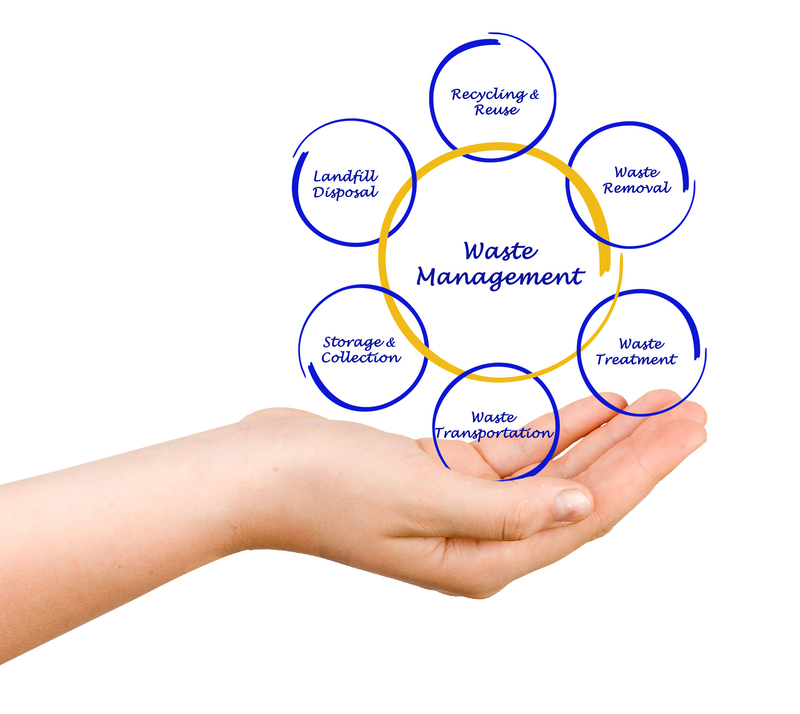Ways to Minimize Hazardous Waste at Home
Posted on 18/04/2025
Ways to Minimize Hazardous Waste at Home
In an increasingly environmentally-conscious world, reducing hazardous waste at home has become paramount. Hazardous waste poses serious risks to human health and the environment, making it crucial to manage and minimize its presence in our daily lives. This article aims to provide comprehensive strategies to minimize hazardous waste effectively at home.
Understanding Hazardous Waste
Hazardous waste refers to any materials that are dangerous or potentially harmful to human health and the environment. These substances can be in the form of liquids, solids, gases, or sludges. The most common sources of hazardous waste in households include cleaning products, paints, pesticides, batteries, and certain electronic waste.

Read Labels Carefully
One of the simplest yet most effective ways to minimize hazardous waste is by becoming a vigilant consumer. Always read labels carefully before purchasing products. Look for key terms such as "Caution," "Warning," "Danger," or "Poison." These indicators will help you identify products that may contain hazardous substances.
Whenever possible, opt for products with labels that indicate they are environmentally friendly or non-toxic. Choosing such products can significantly reduce the amount of hazardous waste generated at home. Additionally, seek out eco-certifications like Green Seal or EcoLogo, which signify that the product meets strict environmental standards.
Use and Store Chemical Products Properly
Proper usage and storage of chemical products can prevent them from turning into hazardous waste. When using household chemicals, ensure you follow the manufacturer's instructions. Overuse or misuse of these products not only leads to waste but can also cause harm.
Proper storage is equally important. Keep all hazardous materials in their original containers with the labels intact. Store them in a cool, dry place away from direct sunlight. Make sure the storage area is out of reach of children and pets to prevent accidental exposure or ingestion. Additionally, avoid stockpiling chemicals; buying only what you need can minimize waste and reduce the risk of accidents.
Opt for Alternatives
Many household products that contain hazardous substances have safer alternatives. For instance, instead of using chemical-based cleaning products, consider making your own cleaners using natural ingredients like vinegar, baking soda, and lemon juice. Not only are these alternatives less harmful, but they are also cost-effective and easy to make.
Similarly, choose water-based paints over oil-based ones, and opt for integrated pest management (IPM) methods instead of relying on chemical pesticides. By exploring and adopting such alternatives, you can drastically reduce the amount of hazardous waste generated in your home.
Recycle Electronic Waste
Electronic waste, or e-waste, is rapidly becoming one of the largest components of hazardous household waste. Items like old phones, computers, and batteries contain toxic substances such as lead, mercury, and cadmium. Improper disposal of e-waste can lead to these toxins leaching into the soil and water.
Many communities offer e-waste recycling programs that allow you to dispose of your electronic devices safely. Some manufacturers and retailers also offer take-back or recycling programs. Ensure you wipe your personal data from any devices before recycling them. By responsibly recycling e-waste, you can help prevent hazardous substances from polluting the environment.
Participate in Household Hazardous Waste Collection Programs
A growing number of communities organize household hazardous waste (HHW) collection programs, where residents can safely dispose of items like paint, pesticides, and solvents. Participating in these programs helps ensure that hazardous materials are handled, treated, and disposed of correctly.
If your community does not have an HHW program, reach out to local government officials or environmental organizations to advocate for one. Proper disposal through HHW programs mitigates the risks associated with hazardous waste, protecting both human health and the environment.
Compost Organic Waste
Composting is an excellent way to reduce the amount of organic waste in your household, which in turn minimizes hazardous waste. Food scraps, yard trimmings, and other organic materials can be composted to create nutrient-rich soil. This practice not only reduces waste but also decreases the need for chemical fertilizers, which are often hazardous.
By composting, you can also reduce the amount of waste sent to landfills, where it can generate harmful byproducts like methane gas. Setting up a home composting system is fairly easy and can be done in your backyard or even indoors with the right equipment.
Reduce, Reuse, and Recycle
The age-old adage of "reduce, reuse, and recycle" is still highly relevant when it comes to minimizing hazardous waste. Reducing the amount of hazardous materials you use and purchase is the first step. Look for ways to reuse or repurpose items instead of disposing of them. For example, use old clothing as rags or repurpose glass jars for storage.
Recycling is the last step but is equally important. Many materials, such as glass, paper, and certain plastics, can be recycled to reduce the amount of waste in landfills. Participate in local recycling programs and ensure you follow the guidelines for properly sorting materials.

Educate Yourself and Others
Knowledge is a powerful tool in minimizing hazardous waste. Educate yourself about the types of hazardous materials in your household and the proper ways to handle and dispose of them. Many resources are available online and through local environmental organizations.
Sharing your knowledge with family, friends, and neighbors can amplify your impact. By raising awareness about the importance of reducing hazardous waste, you can help create a community that is more conscientious and proactive in protecting the environment.
Conclusion
Minimizing hazardous waste at home is a multi-faceted approach that involves careful product selection, proper usage and storage, recycling, and community involvement. By implementing the strategies outlined in this article, you can play a vital role in reducing the environmental and health risks associated with hazardous waste. Every small effort counts and contributes to a safer, healthier planet for future generations.

